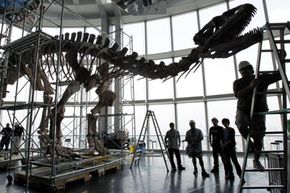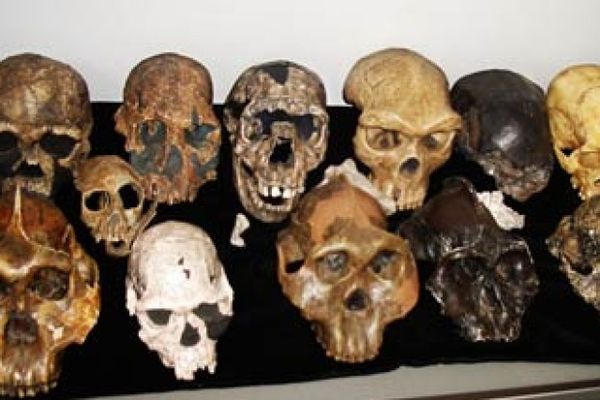When you think of dinosaur fossils, you probably think of bones, the scientific riddle of putting those bones together and figuring out where all the meat and guts went. You certainly wouldn't expect to discover a cache of dinosaur blood while digging around in your backyard. And if you soaked a dinosaur bone in acid, it wouldn't dissolve into gristle.
Or would it?
Advertisement
This question became a controversial topic of discussion in 2005 when a team of North Carolina State University paleontologists published a paper titled "Soft tissues are preserved within hindlimb elements of Tyrannosaurus rex" in the journal Science.
Scientist Mary Schweitzer and her team had placed a fossilized T. rex bone fragment in an acidic demineralizing bath to study its components and let the process take its full course. If the fossil had been nothing but rock, the bath would have dissolved absolutely everything. Instead, the process left behind soft tissue. When analyzed, the tissue appeared to be the blood vessels, bone matrix and osteocytes (the cells that build bone) of a 68-million-year-old dinosaur. For a full account of the study and the controversy that followed, read How did scientists find soft tissue in dinosaur fossils?
Theories vary on how soft tissue survived 68 million years, but Schweitzer hypothesized that densely mineralized bone somehow protected the inner structures. In other cases, however, dinosaur soft tissue fossilized along with the bones. When paleontologists unearthed the remains of a 77-million-year-old Brachylophosaurus canadensis in 2000, they discovered its skin, scales, muscle, footpads and stomach contents mineralized as fossil.
Soft tissue fossilization is rare, however, due to decomposition and scavengers. In most cases, dinosaur meat simply wound up in the bellies of other organisms or rotted in the sun. Then, in some instances, sediment covered the bones and enabled the long, slow process of fossilization to begin.
Not surprisingly, soft tissue fossilization occurs most often in creatures that lived in the sediment, like the trilobite, a seafloor arthropod. Large land animals like dinosaurs, however, would have to suffer a rare catastrophic burial -- such as death by landslide.
Explore the links to learn even more about dinosaurs.
Advertisement

